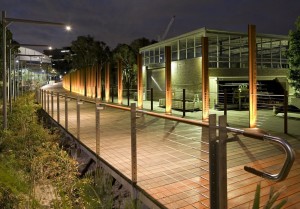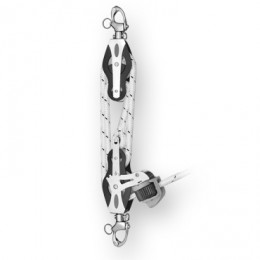Here at Ronstan we know our blocks and pulleys are used for a large number of exciting tasks – such as erecting a circus tent!

Key Elements of a Circus Tent
Firstly, becoming familiar with all the elements which make up the tent is key. Knowing how they work, which part does what, and most importantly; what goes where! Secondly, it is all about the tools. You will need these key items to erect your circus tent:
- Tent Canvas (for the roof)

- The Central Pole
- The Secondary and Tertiary Poles
- Individual Pole Bale-Ring and Flag Staffs
- Some Strong Stakes
- A Sledgehammer
- A Series of Strong Blocks and Pulleys
- At Least 500 Feet of Strong Quality Rope
Step 1 – Assess the area
The starting point is properly assessing the area in which you wish to erect your circus tent. The required size of the area is very much dependent on the size of your tent (typical oval circus tents are usually around 118 feet by 150 feet but they can be as large as 500 feet). So be sure to know what you are working with to start.
2–Mark out the area The next step is then marking out the area to match the diameters
The next step is then marking out the area to match the diameters
of our specific tent. Be sure to do this with caution, as measuring accurately is of pivotal importance when erecting such a structure. The next marking is also important. You should work out the exact center of the space, as this is where you will place your central pole.
Step 3 – Time to stake out Next comes the fun part – driving the stakes into the ground. Using your sledgehammer, drive each stake into the ground until only a third of it is showing, this will ensure that these grounding are secure. Now the stakes should be quite a size, up to five feet long and three inches thick.
Next comes the fun part – driving the stakes into the ground. Using your sledgehammer, drive each stake into the ground until only a third of it is showing, this will ensure that these grounding are secure. Now the stakes should be quite a size, up to five feet long and three inches thick.
Step 4 – Roll out the canvas!

Now it is time to unfold the canvas. Roll it out within the confines of your market out area so that it is central. Then prepare the internal poles by placing spacing them out equally between the stakes, at this point again refer to your tents instructions for specific dimensions for your individual tent. Create a small hole for the central pole to be placed in. Then prepare your Ronstan block and tackle units, and the flag staff by attaching the block and tackle to each pole, and connect the strong ropes for the raising and positioning of the central pole. Assemble the crew and use the pulley system to erect the central pole, with one member at the base of the pole armed with a crowbar for positioning, and a small group to physically aide the pole in its erection.
Step 5 – Fasten the canvas
Then it comes to fastening the canvas roof in place. Each portion needs to be secured to the bale ring which encircles the centre pole by rope. Next prepare the bale ring of each pole for raising, by once again utilizing the pulleys. Then when you pull on the ropes the tent will lift to the ceiling, then you must close the seams at the bale ring of each pole and tie off the ropes.
Step 6 – Erect the minor poles
Finally, you can erect the minor poles throughout the circumference of the tent. Mount each upon a stake and then lift with the same rope and pulley procedure used for the main poles. The canvas will now be airborne, perfectly supported by each of the poles. Fasten the tent top to each stake and secure all ropes and flaps. Now you are ready to perform a final safety check before working on your stage and lighting rigging.
Ronstan Industrial provide the equipment people can rely on.
News & Update








 The next step is then marking out the area to match the diameters
The next step is then marking out the area to match the diameters Next comes the fun part – driving the stakes into the ground. Using your sledgehammer, drive each stake into the ground until only a third of it is showing, this will ensure that these grounding are secure. Now the stakes should be quite a size, up to five feet long and three inches thick.
Next comes the fun part – driving the stakes into the ground. Using your sledgehammer, drive each stake into the ground until only a third of it is showing, this will ensure that these grounding are secure. Now the stakes should be quite a size, up to five feet long and three inches thick.



 example, in simple language, using two pulleys to lift a weight it only needs half the force to lift it as it would with one pulley, however if the weight was being lifted one metre high, two metres of rope would be needed. This is termed the ‘mechanical advantage’ and can be increased by adding more pulleys into the
example, in simple language, using two pulleys to lift a weight it only needs half the force to lift it as it would with one pulley, however if the weight was being lifted one metre high, two metres of rope would be needed. This is termed the ‘mechanical advantage’ and can be increased by adding more pulleys into the 

 Special purpose blocks, e.g. those that can be permanently mounted within walls
Special purpose blocks, e.g. those that can be permanently mounted within walls












